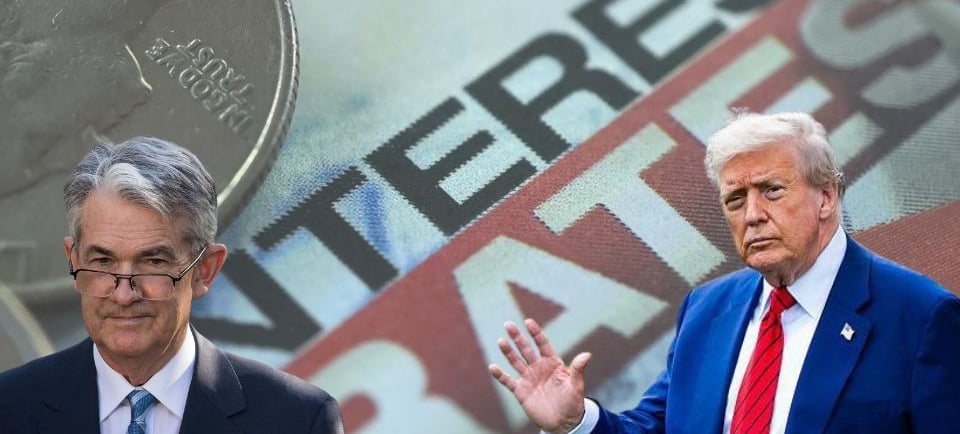BND Scope: Issue 5 – Rates, Shocks, and Capital Flows
U.S. rate policies have become a political battleground. From Trump’s aggressive cuts to Powell’s cautious stance, explore key shifts in investment trends in BND Scope’s latest end-of-June edition.
BND SCOPE
6/27/20252 min read


Interest rate tensions intensify in the U.S., while geopolitical frictions steer investors toward cautious optimism.
In the U.S., monetary policy has evolved from being an economic lever to becoming a political battlefield. President Donald Trump has escalated his rhetoric, directly challenging the Federal Reserve and Jerome Powell’s leadership.
Trump demands an immediate 2–3 point rate cut, calling the current 4.25–4.5% range “irrationally high.” He argues that such a cut would boost growth and reduce the federal interest burden. Yet, this approach raises serious concerns over the independence of monetary policy.
Fed Chair Powell, supported by most of the FOMC, maintains a cautious “data-dependent” stance. Inflation remains above the 2% target (currently around 2.3–2.6%), and the Fed prefers to wait until the fall. However, dissent exists within the Fed: Trump appointees like Waller and Bowman advocate for a July cut.
Investors are still pricing in a likely cut in September, with only modest probability for July.
Is a Slowdown Coming? Recession Signals & Inflation Risks
The Rate Wars: Trump vs Powell – Who Will Prevail?
The Conference Board’s Leading Economic Index has declined for the sixth consecutive month, flashing a recession warning. Weak manufacturing orders, rising unemployment claims, and consumer pessimism drive this signal.
Meanwhile, U.S. strikes on Iranian nuclear sites could push oil prices to $80–100 per barrel, sparking inflationary pressures. Experts warn this could lead to a “summer storm” in prices. Hear journalist Steve Liesman discuss the potential economic impacts of the tensions between the United States and Iran.
Capital Returns to the U.S. – Confidence, Cash & Mega Investments
Global capital is flowing back into U.S. markets, with a renewed “Buy America” sentiment. Despite recent rallies in European banks and defense stocks, major investors are rotating toward the U.S.
A surge of $320 billion into U.S. money market funds (now totaling $7.4 trillion) highlights demand for low-risk, high-yield instruments. This reflects both caution and sustained trust in U.S. financial markets.
Major domestic investments are also taking shape:
Texas Instruments will build seven semiconductor plants, investing $60 billion.
U.S. Steel plans an $11 billion facility, creating 100,000 jobs.
Strategic sectors are being reshaped on U.S. soil, supported by policy incentives and investor interest.
U.S. involvement in the Israel–Iran conflict could lead to a sharp market reaction. Brent crude has already climbed 9%, and broader energy price hikes could follow.
On the policy front, Trump’s proposed “revenge tax” (Section 899) targets foreign firms from countries with “unfair taxes,” introducing tariffs up to 20%. European companies are closely evaluating their exposure.
What this means for investors:
Energy-driven inflation could limit the Fed’s flexibility.
Section 899 may deter foreign capital and reshape U.S. market listings.
Short-term volatility is likely if geopolitical risks escalate.
The New Trade Front – Tax Retaliation & Military Tension

The contrasting views:
Bears: Slowing indicators suggest a cautious approach is warranted.
Bulls: Equity rallies and a strong labor market show resilience.
Moderates: A shallow growth period—not a full recession—is more likely.
Prioritize defensive sectors, focus on cash-generating assets, and closely monitor commodities.
BND's Final Take
The U.S. economy is under simultaneous pressure from political discord and global shocks. Despite that, capital flows suggest trust in American resilience remains strong. In a market that’s still seeking direction, “cautious optimism” is the prevailing tone.
At BND Consulting, we help make developments in the U.S. economy clearer and easier to navigate. Let’s chart your path forward together.
Consulting
Join
info@bnd.consulting
+1 (832) 270-5239
© 2024. All rights reserved.

800 Bonaventure Way Ste 116 Sugar Land TX 77479
